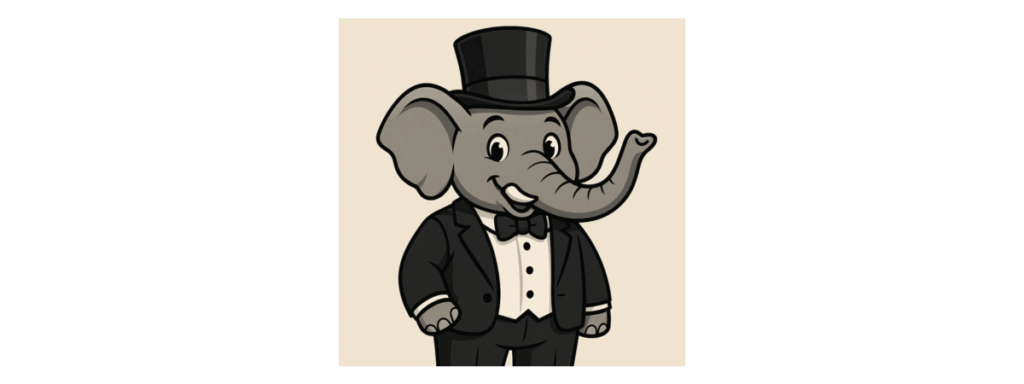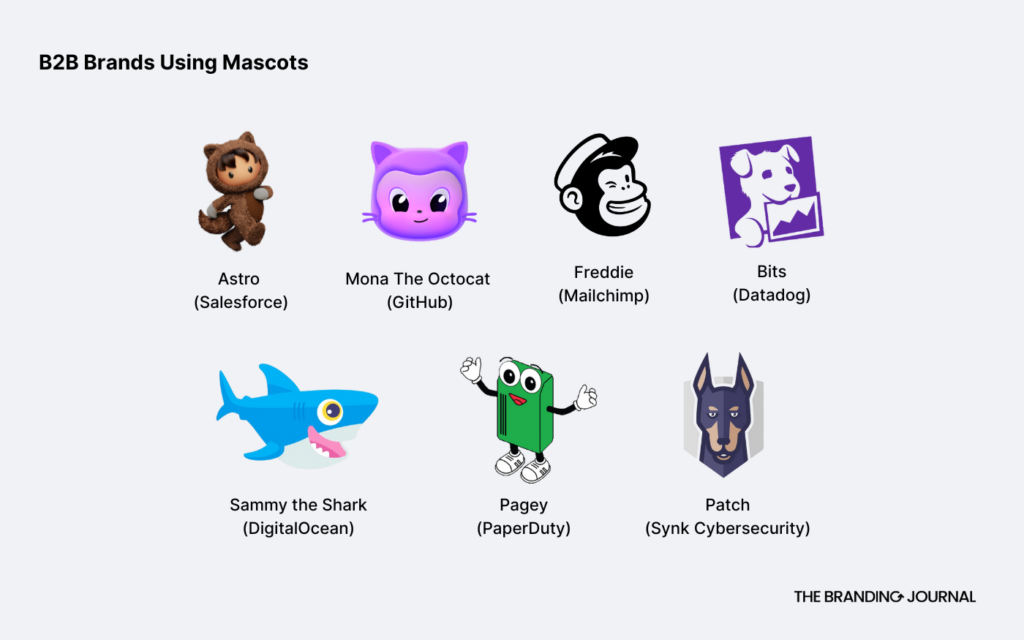When I think of mascots, I think of Japan, sports teams, Smokey the Bear, and Clippy. But if you’ve been paying attention, you’ll notice they’ve been quietly infiltrating the world of B2B. And the results are better than you think.
From Salesforce’s Astro to Mailchimp’s Freddie, B2B companies are embracing mascots to humanize their tech, simplify abstract concepts, and build emotional bridges with audiences who are simply tired of the same old jargon, brand colors, and copycat websites. These characters don’t just decorate pitch decks or display ads—they anchor brand identity, show some genuine creativity (yes, even in B2B), and remove the rigid corporate barriers to establishing brand affinity.
So, as you think about your marketing strategy for H2 and 2026 – it might just require a human to don a mascot costume. Get ready to walk into your CEO’s office.
Proven Systems for Business Owners, Marketers, and Agencies
→ Our mini-course helps you audit and refine an existing brand in 15 days, just 15 minutes a day.
→ The Ultimate Brand Building System is your step-by-step blueprint to building and scaling powerful brands from scratch.
Why Mascots Can Work in B2B
In a sea of sameness—acronyms, meaningless company values, pontification through messaging, and AI-everything —mascots can stand out (literally) and elevate brand narratives.
They’re approachable. They’re memorable. And they show your customers that you are willing to have some fun and take some risks. In other words, you’re at least trying to be authentic.
When they work, mascots create instant recognition and carry the emotional weight that sterile corporate messaging or a tightly defined brand guideline can’t. They act as brand storytellers, educators, and even rallying symbols for company culture. And in a market where trust is currency and attention spans are short, a clever character can be the velcro between a campaign and closed-won.
The Mascot Advantage
Still skeptical? I get it. There is risk here. But here’s what mascots do that your mission statement or company values won’t:
- Humanize Complexity: They make software platforms feel like companions, not chores. Software is changing faster than ever, and this can help ease user anxiety.
- Brand Association: Your mascot can embody the brand and product values you want to be remembered a lot easier than your 90-minute keynote.
- Enhance Memory Recall: An elephant wearing a top hat (I’m making this up) is more memorable than slide 37 of the first call deck.
- Boost Community & Culture: Internally and externally, mascots are likable and create an emotional connection.
- Enable Playful Education: They can guide onboarding, explain features, and defuse user frustration with charm, expertise, and personality.
- Stand Out in the Feed: In the modern LinkedIn feed of broetry – one-line storytelling, perhaps this top hat-wearing elephant with a simple message might just do the trick.
Mascots Are Not Childish—They’re Strategic
Let’s be clear: this isn’t about diluting your brand. It’s about embracing storytelling. Characters activate emotion and unlock access to the human brain in ways corporate approved copy alone can’t. The B2C world figured this out decades ago (anyone remember Max Headroom?).
In B2B, mascots are underused but can deliver high-impact results. They’re not a gimmick—they’re an amplifier. A way to make your message not just heard, but felt.
So, Should You Have a Mascot?
Only you can answer that. Does it align with your brand and company strategy? Does your company support risk-taking? Does your company have that kind of personality?
If signs are pointing to yes, then it could be a competitive advantage. Because it will help you…
- Stand out in a saturated market
- Enhance the product or aid in adoption
- Build emotional rapport with your audience
- Inject some personality into your brand, content, and experiences
- Energize internal culture
And if you’ve made it this far in the article, you are welcome to use my top-hatted elephant.


Mascot Roll Call: What Are Some B2B Brands With Mascots?

| Company | Mascot | Name Description |
| Salesforce | Astro (and friends) | Space explorer teaching AI, CRM, and Trailhead training. |
| GitHub | Mona the Octocat (and friends) | Lovable hybrid octopus-cat for the Dev community. |
| Mailchimp | Freddie | Winking chimp that gives email a lot of personality. |
| Datadog | Bits | Literal dog. Woof. |
| DigitalOcean | Sammy the Shark | A totally adorable shark. |
| PagerDuty | Pagey | Cute alert mascot, with great googly eyes. |
| Snyk Cybersecurity | Patch | Intimidating looking Dobermann. |
Final Thought
Mascots are more than mascots. They amplify your brand through new storytelling, create a human connection, inject personality, and provide a visual trigger for deeper brand and company values. And in B2B, where marketers are finding it harder to drive ROI and establish true connections, a mascot might just be your secret weapon.
So, get sketching, brainstorm some names. And send that calendar invite to the CEO: New Company Mascot.
Proven Systems for Business Owners, Marketers, and Agencies
→ Our mini-course helps you audit and refine an existing brand in 15 days, just 15 minutes a day.
→ The Ultimate Brand Building System is your step-by-step blueprint to building and scaling powerful brands from scratch.


